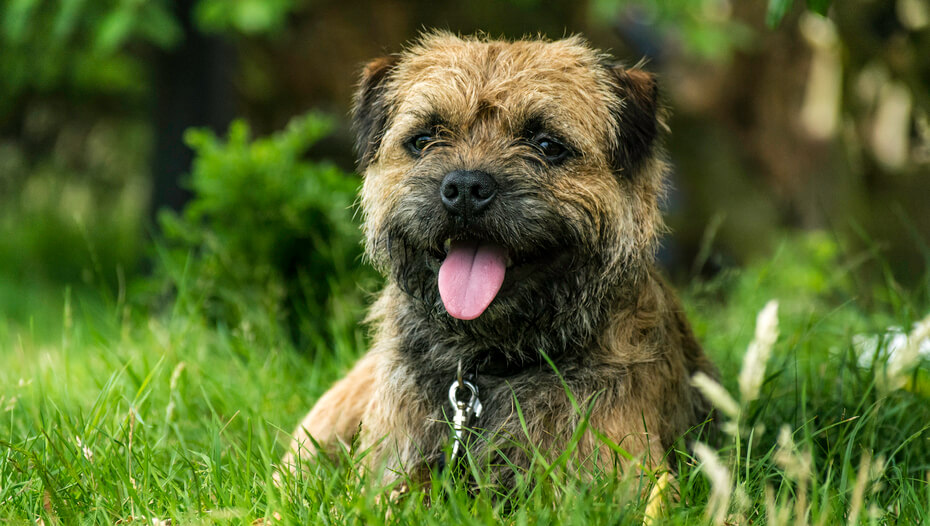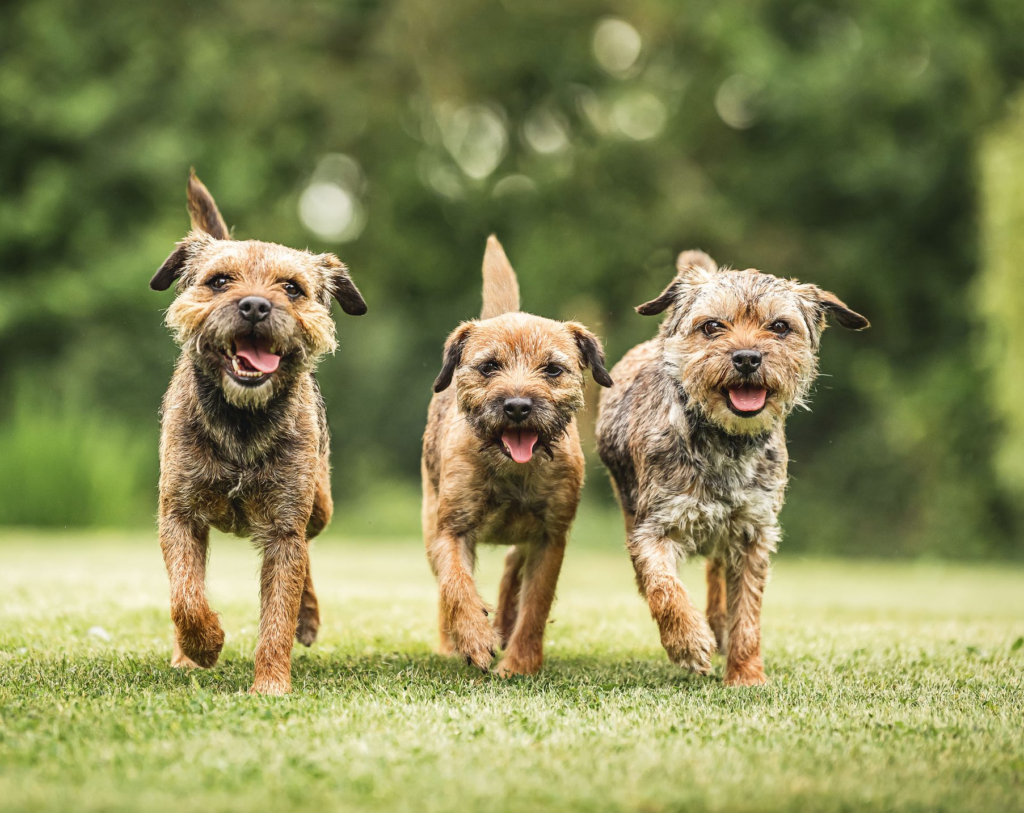Border Terriers

Border Terriers:- The Border Terrier is a small yet sturdy dog, known for its agility, speed, and enduring temperament. With medium bone structure and a body slightly taller than long, this breed has long legs that enable them to keep up with horses across diverse terrains, making them ideal for hunting. Their narrow body allows them to chase foxes through tight spaces, while their gait showcases an impressive length of stride.
Covered by a short, dense undercoat and a wiry, broken outer coat, the Border Terrier’s fur is both protective and durable. The thick and loose-fitting hide provides added protection, which is especially useful during hunts. Perhaps one of the most distinctive features of the Border Terrier is its otter-like head, which along with their alert expression, reflects their energetic and attentive nature.
Owning a Border Terrier: Costs
Owning a Border Terrier involves various costs, with a lifetime estimate reaching over £12,000. After purchasing the dog, whether through adoption or a breeder, you can expect to spend at least £70 per month for care, which includes food, healthcare, and other essentials.

Purchase Costs
Adopting a Border Terrier from a rescue center can be a more cost-effective option, often requiring a small rehoming donation. Rescuing not only saves you money but also provides a home to a dog in need. If you’re set on buying a puppy, be cautious of unusually cheap prices, as they may signal unethical breeding practices like puppy farms. For those wanting a pedigree puppy, it’s wise to seek out a reputable breeder, such as a Kennel Club Assured Breeder, who adheres to strict health standards and testing.
Set-up Costs
In addition to the initial purchase, several set-up costs need to be considered. These include vaccines, equipment like dog beds, harnesses, toys, grooming brushes, and essentials such as a collar, tags, and bowls. Neutering your Border Terrier is also necessary around six months of age, though prices may vary depending on where you live. Some rescue centers might have already neutered your dog, saving you this cost. Additionally, puppies will require booster vaccinations to maintain their immunity.
Ongoing Costs
Caring for a Border Terrier involves ongoing expenses, primarily for food and preventive healthcare. Regular vet checkups, vaccinations, and treatments for fleas and worms are necessary to keep your dog healthy. Many vet practices offer healthcare plans to help spread these costs over the year. Pet insurance is another significant expense. Without it, emergency veterinary treatments for injuries or illnesses can be costly. Always check what’s covered in your policy and ensure you have a good plan in place to handle potential medical issues. You’ll also need to budget for poo bags, grooming accessories, toys, and other supplies that need replacing over time.
Temperament
One of the most endearing traits of the Border Terrier is its friendly and inquisitive temperament. The breed is considered one of the most amiable and easy-going among terriers, making them a joy to be around. They are curious, busy, and always ready to explore, though their independent streak can lead them to roam if not properly contained. Border Terriers are generally good with other dogs and cats, though small animals may not be safe around them due to their strong prey drive.

These dogs are fantastic companions for children, making them an excellent choice for families. However, it’s essential to note that some Border Terriers have a tendency to dig and bark. Additionally, they are skilled escape artists, so keeping a watchful eye is important when they’re in outdoor spaces.
Health Considerations
Like all breeds, Border Terriers are susceptible to specific health issues, so it’s crucial to be aware of these before adopting or buying one. Responsible breeders often use DNA tests and screening schemes to identify potential hereditary conditions and breed healthier dogs. If you’re considering a Border Terrier, talk to your local vet about potential health concerns. Some veterinary practices offer pre-purchase consultations, which can give you insight into possible health problems, management options, and estimated costs. For example, some common issues include hip dysplasia and heart conditions.
Preventative healthcare is vital for all dogs, including Border Terriers. This includes vaccinations, flea and worm treatments, and regular vet visits. Pet insurance can help cover unexpected vet bills, but it’s important to thoroughly compare policies and ensure that you’re protected against any significant health issues that may arise.
Grooming Needs
Border Terriers have a double coat with a hard, wiry outer layer and a soft undercoat. Like many double-coated breeds, Border Terriers shed seasonally. Most of the time, weekly brushing is sufficient to maintain their coat, but during shedding seasons, more frequent grooming will be required. Stripping the dead hair, either by hand or using a rake, is a common grooming method. Despite their sometimes messy appearance, the outer coat of a Border Terrier repels dirt well, and most of the time, a good brushing is enough to clean them. Bathing should be minimal, as frequent washing can compromise the coat’s ability to repel dirt.
In addition to grooming their coat, regular nail trimming is necessary. Long nails can cause discomfort and health issues, so it’s important to keep them at an appropriate length.
Appearance
The Border Terrier’s physical features make them well-suited for hunting. Their thick, loose skin helps protect them from fox bites and gives them flexibility when maneuvering in tight spaces. Their double coat provides insulation and protection from harsh weather and rough terrain. Though the coat requires occasional stripping, it is low-maintenance compared to other breeds.
Their head is often compared to that of an otter, with a flat skull, defined stop, and a strong muzzle, giving them a distinctive look. This breed is also athletic and agile, with a lean, narrow body that supports efficient movement. Weighing between 5 and 7 kilograms, they are lightweight yet muscular, allowing them to move swiftly over various terrains.

Vital Statistics
Border Terriers have dark, expressive eyes and small, V-shaped ears that fold forward close to the cheeks. Their tail is short, thick at the base, and tapers off, giving them a distinctive appearance. The coat comes in various colors, including red, wheaten, grizzled, and tan, or blue and tan. A Border Terrier’s movement should be sound, with enough strength to keep pace with a horse.
In conclusion, the Border Terrier is a lively, friendly, and hardy breed that makes a great companion for active families. Though they require some maintenance and ongoing healthcare, their loyal temperament and adaptability make them wonderful pets. With proper care, training, and attention, the Border Terrier will thrive and bring joy to your home for many years.
Also Read:-




